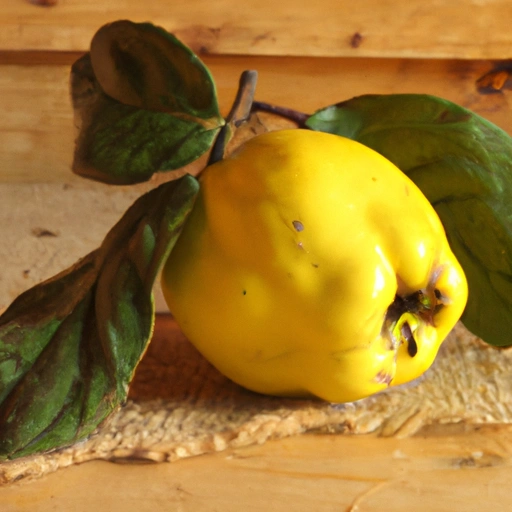Quince
Description

The quince is a fruit known for its pectin-rich quality and aromatic fragrance, belonging to the same family as apples and pears. It's typically golden-yellow when mature and has a distinctive pear-like shape. The flesh of the quince is hard and tart, making it unsuitable for raw consumption but excellent for cooking and preserving.
Common uses
Quince is commonly used in sweet preparations such as jams, jellies, and desserts. It's also featured in savory dishes, acting as a flavor enhancer for meats and stews.
Nutritional value
Calories
Quince is low in calories, providing roughly 52 calories per 100 grams (3.5 oz).
Protein
The fruit contains about 0.4 grams of protein per 100 grams (3.5 oz).
Fat
Quince is virtually fat-free, with less than 0.1 grams per 100 grams (3.5 oz).
Carbohydrates
It has a moderate carbohydrate content of about 14 grams per 100 grams (3.5 oz), primarily in the form of natural sugars and dietary fiber.
Vitamins
Quince is a good source of vitamin C, providing about 15 mg per 100 grams (3.5 oz), and it also contains some vitamins E and A.
Minerals
The fruit provides valuable minerals such as potassium, offering around 197 mg per 100 grams (3.5 oz), as well as smaller amounts of calcium, magnesium, and phosphorus.
Health benefits
Quince is rich in dietary fiber, which aids in digestion and may help to regulate cholesterol levels. Its vitamin C content makes it beneficial for the immune system, and it has antioxidant properties due to the presence of phenolic compounds.
Potential risks
Raw quince can be tough to digest due to its high fiber and tannin content. Overconsumption may lead to stomach upset in some individuals. It's also crucial to remove the seeds before consumption, as they contain amygdalin, which can release toxic cyanide when metabolized.
Common recipes
Quince is often used in recipes for marmalade, quince paste or 'membrillo', and it can be found in the traditional Middle Eastern sweet 'dulce de membrillo'. It is also baked in pies and tarts.
Cooking methods
The fruit is typically cooked until soft to break down its fibrous texture. This can be achieved by poaching, stewing, or baking. Quince can also be made into syrups, compotes, and used in slow-cooked dishes.
Pairing with other ingredients
Quince pairs well with autumnal spices like cinnamon, cloves, and nutmeg. It complements the flavors of apples, pears, and citrus and can add depth to savory dishes with lamb, pork, and game.
Summary
Quince is a unique and versatile ingredient that can add flavor and texture to a variety of dishes, both sweet and savory. Its rich history and nutritional benefits make it a valuable addition to any kitchen around the world.